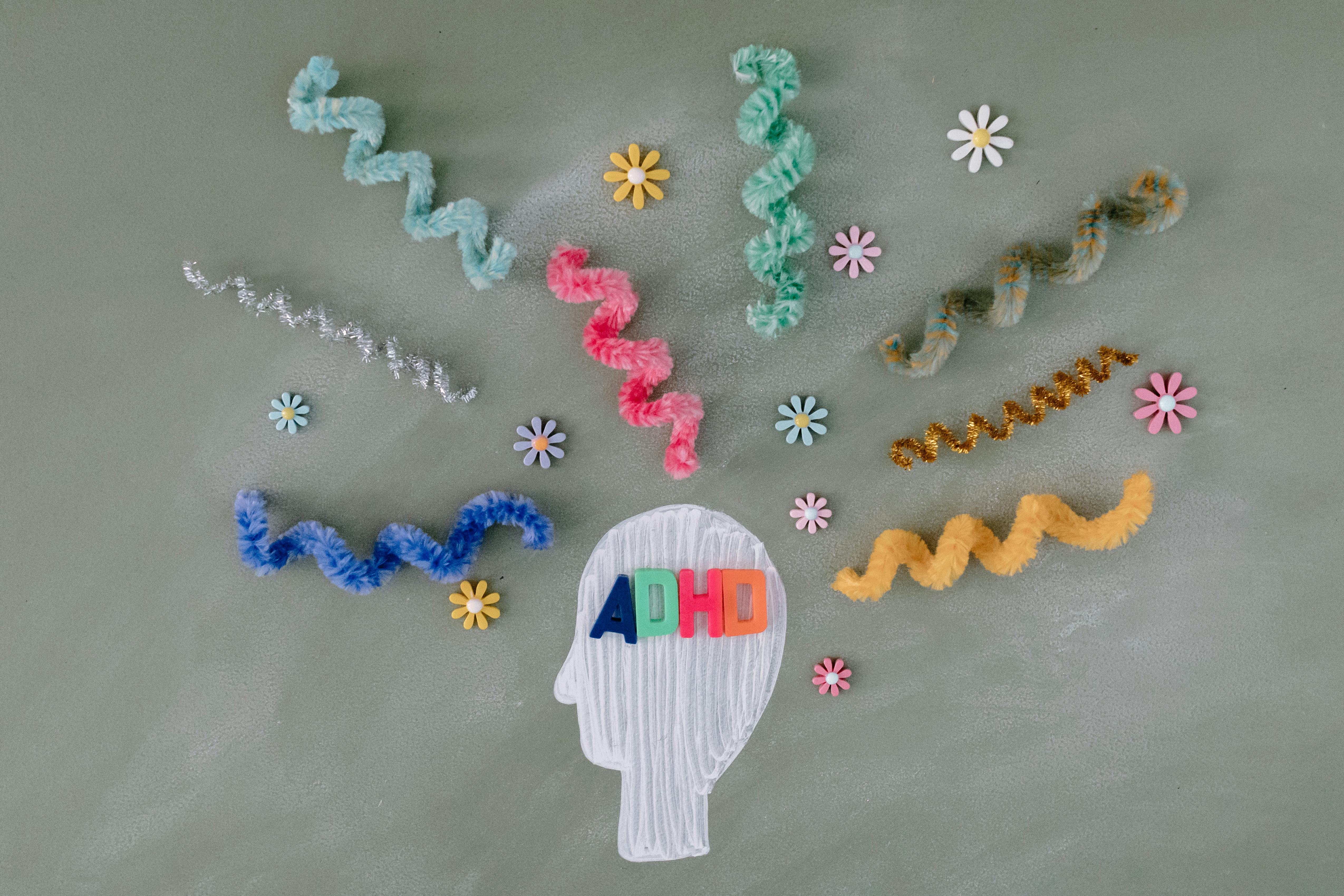Adult ADHD isn't always loud or obvious. It doesn't always look like constant fidgeting or unfinished tasks. For many adults, it hides behind worry, mood swings, or feeling stuck in their own heads. You might have trouble focusing, or you might focus too much. Maybe you've felt misunderstood or wondered why common advice doesn't work for you.
That's why some experts have looked beyond the standard ADHD types to better describe what people actually live with. One of the most detailed models breaks ADHD into seven patterns, each with its own traits and challenges. Let's explore what they are and which one might feel familiar to you.
Why Are There 7 Types of ADHD?
The 7-type model of ADHD was introduced by psychiatrist Dr. Daniel Amen, based on brain scan research and clinical observation. It was fully described in the updated 2013 edition of his book Healing ADD: The Breakthrough Program That Allows You to See and Heal the 7 Types of ADD. He studied brain scans called SPECT scans, which show how blood flows in the brain. He noticed that people with ADHD had different patterns. Some had high activity in parts of the brain. Others had low activity. He also saw different behaviors in each group.
Based on these brain scans and many patient stories, Dr. Amen created 7 types. He wanted to explain why ADHD looks so different from person to person. Not everyone with ADHD acts the same, so he thought these 7 types could give people more answers.
His goal was to help people:
- Understand their struggles more clearly
- Get support that fits their brain
- Avoid wrong treatment
Is This System Official?
No. The DSM-5, which is the official guide doctors use, only lists 3 types of ADHD:
- Inattentive
- Hyperactive-Impulsive
- Combined
Dr. Amen's 7 types are not part of this guide. Many doctors do not use SPECT scans, and they do not follow this model. Some experts also say his system has not been tested enough in large research studies.
What Are the Limits of the 7 Types?
Here are a few things to keep in mind:
- Not everyone agrees with this model.
- Some types may look similar to anxiety, depression, or trauma.
- SPECT scans are not needed to diagnose ADHD.
- The 7 types are not used in most clinics or hospitals.
Still, many people find the 7 types helpful. They feel seen. They say it explains their mix of emotions, focus problems, and habits better than other systems. So, while it is not official, it can still be a useful tool to learn more about your brain.
If you want to use this model, it is best to talk with a mental health provider who is open to different ways of thinking. It is also good to mix this knowledge with real-life support, therapy, or coaching.
Type 1: Classic ADHD
Classic ADHD is the most well-known type. It includes the core symptoms of ADHD.
Main signs:
- Poor attention
- Trouble sitting still
- Acting without thinking
- Talking too much
- Forgetting instructions
- Losing things often
People with this type usually feel very restless. They may interrupt others, rush through tasks, or feel bored quickly. It is common in childhood but can also stay into adult life. Some adults with this type often feel out of control and tired.
Type 2: Inattentive ADHD
This type is harder to notice. People with this type may seem quiet or even shy. But inside, they feel distracted and overwhelmed.
Main signs:
- Daydreaming often
- Slow to respond
- Losing track of time
- Trouble starting or finishing tasks
- Avoiding tasks that need focus
Many women have this type. They may not get diagnosed until adulthood. People with this type may feel lazy or careless, but that is not true. Their brains just process things differently. They often work hard to keep up, but it still feels hard.
Type 3: Overfocused ADHD
This type looks different from the others. Instead of jumping from thought to thought, a person with this type may get stuck on one idea or worry.
Main signs:
- Getting stuck on thoughts
- Being very rigid or stubborn
- Trouble letting go of hurts or mistakes
- Having obsessive thoughts
- Repeating habits over and over
This type is often linked with anxiety. A person may try to be perfect or feel scared to change plans. They want control and order but often feel frustrated because nothing feels "just right." They may seem like they focus well, but it is often painful focus that will not stop.
Type 4: Temporal Lobe ADHD
The temporal lobes of the brain help with memory and emotions. If those areas do not work smoothly, ADHD can show up with mood swings or poor memory.
Main signs:
- Sudden anger or sadness
- Trouble remembering events or names
- Feeling confused during arguments
- Feeling misunderstood
- Sometimes feeling aggressive
People with this type may feel up and down emotionally. They may say things they regret later. Others may think they are overreacting. But these ups and downs are not planned. They come from brain patterns that are hard to control.
Type 5: Limbic ADHD
The limbic system is the brain's emotional center. If it is out of balance, it can bring sadness, low energy, and low self-worth.
Main signs:
- Feeling tired all the time
- Often feeling sad or empty
- Thinking negative thoughts
- Low motivation
- Pulling away from people
This type can look like depression. But the cause may be deeper brain activity. People with this type may feel like nothing they do is good enough. They may avoid tasks because they fear failure. This is not a weakness. It is a sign of a brain that needs help and support.
Type 6: Ring of Fire ADHD
This type shows strong emotions and high activity in many areas of the brain. A person with this type may feel overwhelmed by thoughts, sounds, or feelings.
Main signs:
- Talking a lot and fast
- Very sensitive to noise or light
- Easily upset
- Mood swings
- Trouble sleeping
This type can look like many things at once: ADHD, anxiety, and even bipolar disorder. It may feel like the brain is always "on." A person may feel sharp but also very stressed. Crowds, arguments, or loud sounds can feel painful.
Type 7: Anxious ADHD
This type mixes ADHD with constant worry. A person with this type often feels nervous or afraid, even when things seem fine.
Main signs:
- Worrying all the time
- Tension in the body
- Fearing the worst in every situation
- Needing approval
- Trouble speaking in groups
People with this type want to do well and be liked. They try hard, but their worry holds them back. They may freeze during tests or meetings. They may avoid things that feel unsafe or uncertain. Their brain feels alert, but not in a helpful way.
Can You Have More Than One Type?
Yes. Some adults show signs of two or three types. For example, a person may have trouble with focus (Type 2), feel stuck on negative thoughts (Type 3), and also have strong emotions (Type 6). The brain is complex. It is not always easy to fit in one box.
The goal is not to find the perfect label. The goal is to understand what is happening in your mind and body. Once you understand that, you can try better tools and make your daily life smoother.
What to Do Next
If some of the signs feel true for you, consider talking to a doctor or mental health professional. You can write down what you feel and when it happens. Bring it with you to your visit. That can help the doctor understand what support you may need.
You can also try some simple changes at home:
- Use alarms to help with time
- Break tasks into small steps
- Write things down often
- Take quiet breaks during the day
- Ask for help when needed
ADHD is not your fault. It is not about being lazy or weak. It is a brain pattern that needs care. With the right tools, you can do well at work, in relationships, and in daily life.
Final Thoughts
ADHD is not the same for everyone. Some adults feel slow and unfocused. Others feel restless and emotional. Some feel all of that at once. The 7 types help people understand the full picture.
Learning about these types is a step toward better support and kinder self-talk. Many adults with ADHD spent years feeling broken. But they were never broken. They just needed answers. You can find your own answers too. You are not alone.


